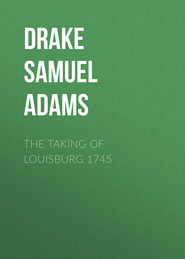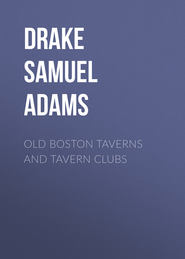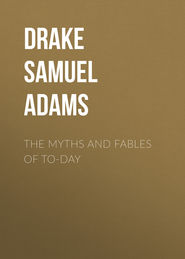По всем вопросам обращайтесь на: info@litportal.ru
(©) 2003-2024.
✖
Nooks and Corners of the New England Coast
Настройки чтения
Размер шрифта
Высота строк
Поля
By Ben Perley Poore and John Romeyn Brodhead.
8
"Massachusetts Archives, French Documents," vol. i., p. 269.
9
Rev. B. F. De Costa's "Northmen in Maine."
10
"Mass. Archives, French Documents."
11
Ibid.
12
"Champlain's Voyages," edit. 1613. Mount Desert was also made out by the Boston colonists of 1630. The reader is referred for materials of Mount Desert's history to Champlain, Charlevoix, Lescarbot, Biard, and Purchas, vol. iv.
13
She was one of the queen's ladies of honor, and wife of the Duke of Rochefoucauld Liancourt.
14
Champlain: Mr. Shea says he was only a lay brother.
15
This has a resemblance to Kenduskeag, and was probably the present Bangor.
16
Charlevoix says the landing was on the north side of the island.
17
"History of Maine," vol. i., p. 80.
18
See Williamson, vol. i., p. 79; "Resolves of Massachusetts," July and November, 1787; "New York Colonial Documents," vol. ix., p. 594. Mr. De Costa has given a summary of these in his pleasant little book.
19
Lescarbot, vol. ii., p. 471.
20
Named for General John Thomas, of the Revolution.
21
Williamson's "History of Maine."
22
Jefferson had his Monticello, Washington his Mount Vernon.
23
Its Indian name was Passageewakeag – "the place of sights, or ghosts." It contained originally one thousand acres, which the settlers bought of the heirs of Brigadier Waldo at two shillings the acre. Belfast was the first incorporated town on the Penobscot. It suffered severely in the Revolution from the British garrison of Castine.
24
In 1797 there were twenty vessels owned in Penobscot River, two of which were in European trade.
25
The upper and larger part is called North Castine.
26
Castine was not incorporated under its present name until 1796. The Indian name of the peninsula was Bagaduce, or Biguyduce.
27
Gordon, vol. iii., p. 304.
28
The man who destroyed Falmouth, now Portland.
29
In 1759 Governor Pownall took possession of the peninsula of Castine, and hoisted the English flag on the fort. He found the settlement deserted and in ruins. —Gov. Pownall's Journal.
30
"The clumsy, shapeless coinage, both of gold and silver, called in Mexico máquina de papa, lote y cruz ("windmill and cross-money"), and in this country by the briefer appellation of "cobs." These were of the lawful standards, or nearly so, but scarcely deserved the name of coin, being rather lumps of bullion flattened and impressed by a hammer, the edge presenting every variety of form except that of a circle, and affording ample scope for the practice of clipping: notwithstanding they are generally found, even to this day, within a few grains of lawful weight. They are generally about a century old, but some are dated as late as 1770. They are distinguished by a large cross, of which the four arms are equal in length, and loaded at the ends. The date generally omits the thousandth place; so that 736, for example, is to be read 1736. The letters PLVS VLTRA (plus ultra) are crowded in without attention to order. These coins were formerly brought here in large quantities for recoinage, but have now become scarce." – William E. Dubois, United States Mint.
I think the name of "cob" was applied to money earlier than the date given by Mr. Dubois. Its derivation is uncertain, but was probably either "lump," or from the Welsh, for "thump," i. e., struck money.
31
On an old map of unknown date Castin's houses are located here.











